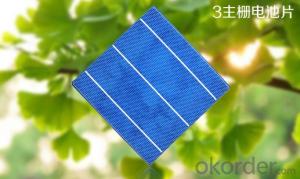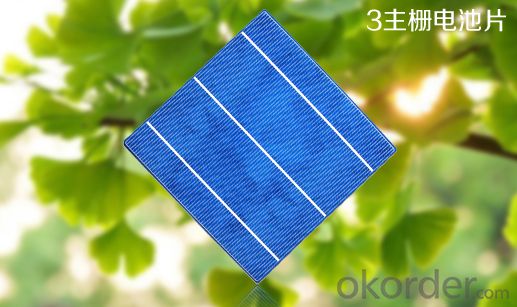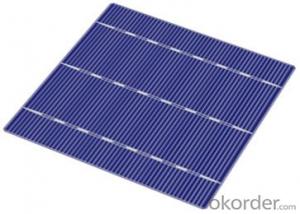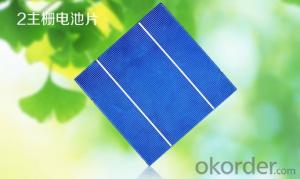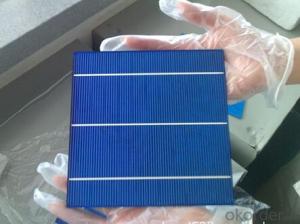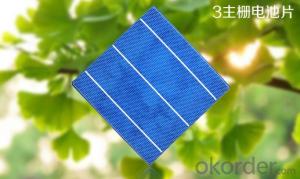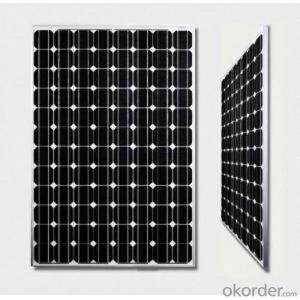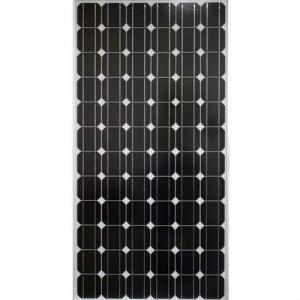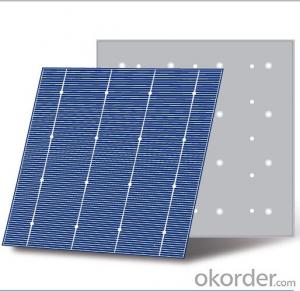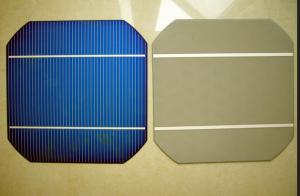Alta Devices Solar Cells 3bb Line
- Loading Port:
- China Main Port
- Payment Terms:
- TT OR LC
- Min Order Qty:
- -
- Supply Capability:
- -
OKorder Service Pledge
OKorder Financial Service
You Might Also Like
We supply regular mono 125x125mm and poly 156x156mm solar cells.
Cells made in China mainland and Taiwan are both available.
Cell production capacity yearly reach 1GW.
Our cells pattern include continuous and uncontinuous busbar to meet different cells line.
Solar Cell Characteristics
• High efficiency and stable performance in photovoltaic conversion.
• Advanced diffusion technique ensuring the homogeneity of energy conversion efficiency of the cell.
• Advanced PECVD film forming, providing a dark blue silicon nitride anti-reflection film of homogenous color and attractive
appearance.
• High quality metal paste for back surface and electrode, ensuring good conductivity, high pulling strength and ease of soldering.
• High precision patterning using screen printing, ensuring accurate busbar location for ease with automatic soldering a laser cutting.
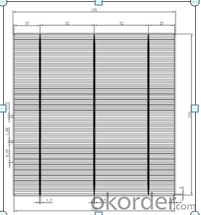
- Q: Can solar cells be used for powering water treatment plants?
- Yes, solar cells can be used for powering water treatment plants. Solar energy can be harnessed and converted into electricity to power the various processes and equipment required for water treatment. This renewable energy source offers a sustainable and environmentally friendly solution for powering water treatment plants.
- Q: Can solar cells be used on windows?
- Yes, solar cells can be used on windows. Photovoltaic (PV) technology allows solar cells to be integrated into windows, transforming them into transparent solar panels. These solar windows can generate electricity from sunlight while still maintaining the functionality of a regular window. They are being increasingly used in buildings to harness solar energy and contribute to sustainable energy solutions.
- Q: Can solar cells be used in high-altitude areas?
- Yes, solar cells can be used in high-altitude areas. In fact, solar cells can work even more efficiently in high-altitude locations due to the thinner atmosphere, which allows for greater solar radiation to reach the cells.
- Q: How do solar cells perform in regions with high levels of air pollution?
- Solar cells tend to perform less efficiently in regions with high levels of air pollution. The particles and pollutants in the air can block sunlight from reaching the solar cells, reducing their ability to generate electricity. Additionally, air pollution can accumulate on the surface of the solar panels, further reducing their efficiency. Regular cleaning and maintenance of the solar panels can help mitigate the impact of air pollution on their performance.
- Q: Can solar cells be used in mobile devices?
- Yes, solar cells can be used in mobile devices. In fact, many modern smartphones and tablets are equipped with solar panels or have the capability to be charged using solar energy. This allows for increased energy efficiency and convenience, especially when used in outdoor or remote locations.
- Q: Can solar cells be used for powering space missions?
- Yes, solar cells can be used for powering space missions. Solar cells convert sunlight into electricity, providing a reliable and sustainable power source for space exploration. They have been extensively used on spacecraft and satellites to generate electricity for various systems and instruments.
- Q: What is the maximum voltage output of a solar cell?
- The maximum voltage output of a solar cell can vary depending on various factors such as the type and design of the solar cell, as well as the intensity of sunlight. However, for a typical silicon solar cell, the maximum voltage output is usually around 0.5 to 0.6 volts.
- Q: Can solar cells be used on satellites?
- Yes, solar cells can be used on satellites. In fact, they are commonly used to power satellites in space by converting sunlight into electricity.
- Q: What is the role of maximum power point tracking in solar cell systems?
- The role of maximum power point tracking (MPPT) in solar cell systems is to optimize the power output of the solar panels by continuously adjusting the operating point to the maximum power point, which is the point at which the solar panel generates the most power. MPPT ensures that the solar cell system operates at its highest efficiency, allowing for maximum energy production and improved overall performance.
- Q: What is the impact of solar cells on reducing greenhouse gas emissions?
- Solar cells have a significant impact on reducing greenhouse gas emissions as they generate clean and renewable energy from sunlight, without emitting any greenhouse gases. By replacing fossil fuel-based electricity generation, solar cells help reduce the carbon dioxide and other harmful emissions that contribute to climate change. This transition towards solar energy plays a crucial role in mitigating global warming and creating a more sustainable future.
Send your message to us
Alta Devices Solar Cells 3bb Line
- Loading Port:
- China Main Port
- Payment Terms:
- TT OR LC
- Min Order Qty:
- -
- Supply Capability:
- -
OKorder Service Pledge
OKorder Financial Service
Similar products
Hot products
Hot Searches
Related keywords
